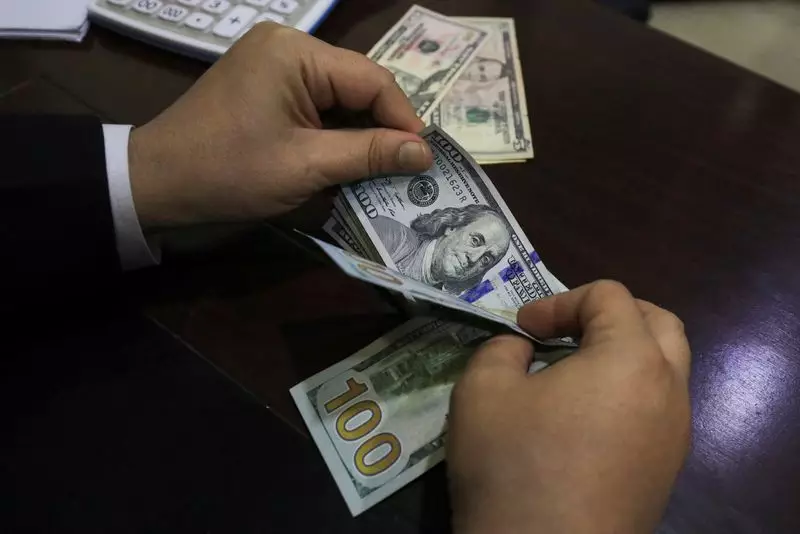In recent trading sessions, the U.S. dollar has been exhibiting notable volatility against other major currencies, hovering near a one-week low. The fluctuations come amid an evolving geopolitical situation, specifically concerning President-elect Donald Trump’s promises regarding tariffs and economic policies. Investors and analysts alike are left to grapple with the implications of Trump’s statements and actions, deciphering how they will influence the dollar’s strength on the global stage.
The initial slide of the dollar against currencies such as the euro and the British pound was triggered by reports suggesting that Trump’s administration might implement tariffs selectively, focusing only on sectors deemed critical to U.S. economic security, rather than across-the-board increases. This development sent mixed signals to traders, who are weighing the potential consequences of a more measured tariff approach, oscillating between concerns and reassurances regarding the future economic landscape.
Following his denial of the Washington Post report on his social media platform, the dollar managed to regain some lost ground, reflecting an essential dynamic in currency trading: market sentiment can shift rapidly based on leadership communications. The U.S. dollar index, which measures the dollar’s value against a basket of currencies, briefly rebounded, suggesting that traders might be reassessing the probable outcomes of Trump’s policies.
This situation reflects a larger theme within currency markets: uncertainty drives volatility. Chris Weston, head of research at Pepperstone, emphasized the general belief among traders that the aggressive tariffs Trump once promised were unlikely to materialize in their original form. This belief has been reinforced by the latest reporting, indicating that market participants are increasingly skeptical about the capacity for extreme tariff implementations, which historically could lead to adverse impacts on global trade dynamics.
The euro has been particularly affected by the uncertainty surrounding U.S. tariffs. As the dollar fluctuated, the euro dipped slightly after reaching a one-week high; this indicates a delicate balance of power among major currencies where even minor developments can instigate notable shifts in value. The British pound has mirrored this trend, showing small declines after a previous rise, signaling that the markets are still absorbing the implications of both U.S. economic policies and domestic developments.
On the other hand, the dollar’s strength against the Japanese yen highlights another aspect of the current financial environment: the appeal of higher U.S. Treasury yields. Increased yields often attract foreign investment into U.S. markets, thereby driving demand for the dollar. The currency reached its highest point against the yen since mid-July, underlining a robust performance in certain aspects despite broader pressures.
Political developments in other regions, particularly Canada, also play a role in influencing currency values. Canadian Prime Minister Justin Trudeau’s announcement of his intention to step down has led to a sliding Canadian dollar against its U.S. counterpart. Kyle Rodda, a senior analyst at Capital.com, articulated an intriguing market perspective that traders are increasingly buoyant about a future without Trudeau, revealing how politics can significantly sway currency values and investor sentiment.
As we navigate through these complex developments, the resilience of bitcoin and other cryptocurrencies also offers another layer of insight into market behavior. Bitcoin’s recent surge indicates a growing appeal of alternative assets amid conventional market disruptions. This backdrop of fluctuating currencies and the rise of digital currencies presents an evolving narrative that investors must actively monitor.
The recent movements of the U.S. dollar highlight the intricate interplay between politics, market sentiment, and currency valuation. Traders remain vigilant, analyzing every piece of information that could influence future policies and economic outcomes. As President-elect Trump prepares to take office and implement his economic agenda, the global financial atmosphere will likely continue to shift in response to his decisions on tariffs and broader economic strategies. The long-term implications are yet to be fully realized, but the current landscape clearly illustrates how interconnected and sensitive currency markets are to both domestic and international political events.

